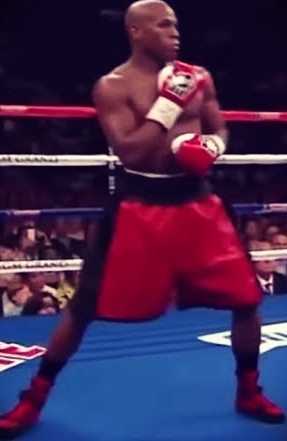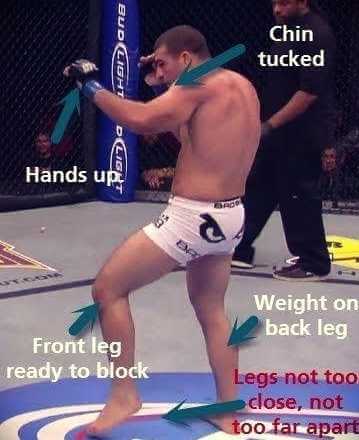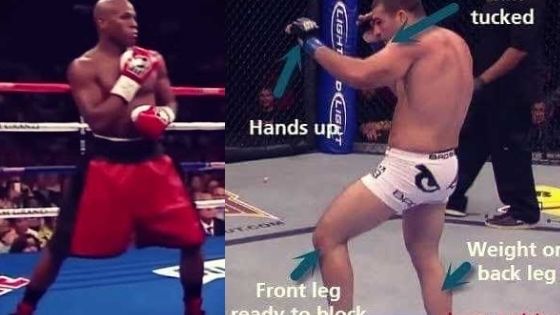Mixed martial arts is a modern full-contact hybrid combat sport that combines striking, grappling, and ground fighting, and incorporates techniques from various combat sports including boxing, kickboxing, Muay Thai, Brazilian Jiu-jitsu, and many other disciplines.
The whole concept of MMA is based on the use of different techniques from different martial arts.
MMA fighters will usually have a particular martial art in which they are thoroughly rounded. This serves as the foundation for other arts to be built on, as they aim to become more well-rounded and complete mixed martial artists.
The base martial arts that fighters adopt tend to be one of striking (boxing, kickboxing, Muay Thai) rather than grappling (wrestling, Judo, BJJ).
While many of the striking styles could serve as a solid foundation for MMA fighters, the most widely adopted of them all would seem to be boxing and Muay Thai (also called Thai boxing).
Being two of the most popular striking styles in the world of mixed martial arts, it is only natural that there would be debates over which of these styles is superior.
Boxing and Muay Thai possess very few similarities other than the fact that they are both arts of self-defense.
Choosing one of these styles upon which to base a mixed martial arts foundation is a decision that should be made on the virtue of which of them you prefer or think to be more suitable to your disposition as a fighter.
However, taking a closer look at the styles reveals technical differences and distinguishing features between each one, and you might want to consider these differences before making up your mind.
These distinctive features of each discipline will help you choose which one to start with.
1. Stances and Footwork
The fighting stance is the very first introduction a fighter receives as to what a particular striking style is all about.
It is often easy to tell what style you’re dealing with by the opening stance alone. In boxing, fighters often adopt a very side-on stance, also known as a bladed, parallel, or narrow stance.

Boxers do this to present as little a surface as possible to be hit by their opponents, making themselves smaller targets and presenting an opportunity for them to land a weak-handed jab moving forward.
They also tend to bounce on the balls of their feet to pivot and sidestep in and out of attacking range. And this works perfectly in a boxing match, but it presents quite a number of problems in an MMA matchup.
The sideways stance exposes the side and the back of the leg to vicious leg kick attacks when going up against a kickboxer or a Muay Thai fighter. There’s no better showing of this flaw in adopting a boxing stance for an MMA fight than in this video of a matchup between a boxer and a Muay Thai practitioner.
The Muay Thai stance is a much more neutral, balanced, or square-on stance.
This stance is done with the lead leg pointing forward rather than inward as in the side-on stance.
The purpose of this stance is that it enables the Muay Thai fighter to defend incoming kick attacks by simply raising their legs at a 45-degree angle to “check the kick” or lessen the force.
The stance is also useful in attack as it allows a fighter to throw kicks and knees quicker. Muay Thai fighters’ flat-footed stance also aids their kicking attacks.
From this comparison, it is clear that the Muay Thai stance is more suited to MMA.

2. Guard and Range
Since the attacks in boxing only target the head and upper body, the guard consists of both hands close to the head and the elbows low and tucked in to defend against body shots.

This while standing at a very close distance from the opponent, because the range of strikes is around the arm’s length.
Boxers also utilize their well-drilled head movements to evade punches within this range. The elite movement of boxers shines through in MMA when the fights are kept at a favorable range for them.
In Muay Thai the range is slightly farther than in boxing to allow for kicking attacks and evasion. The Muay Thai guard also reflects this as the hands drop a bit lower to allow for blocking high kicks to the head and mid-range kicks to the body.
Muay Thai fighters generally excel at any range since they can attack with kicks at long range, and knees, elbows, and punches at mid and close range.
3. Weapons
The only weapons boxers have are their fists. While they may have perfected the art of punching, boxers have a very limited arsenal compared to Muay Thai fighters who can attack with punches, elbows, knees, and kicks.
Muay Thai is also known as the “Art of Eight Limbs” due to this variety of attacks that employ all limbs as weapons.
In a clinch situation boxers can only land a few shots until they are separated by the referee after a few seconds. Clinch situations in Muay Thai (and MMA) present an opportunity for fighters to land devastating knee and elbow attacks.
4. Training
Both boxing and Muay Thai require very high levels of stamina and fitness. The training for boxers is mostly directed towards strength, speed, and rhythm while the training in Muay Thai is directed towards flexibility, speed, and toughness.
Boxing appears to be the easier style to learn since the number of moves is not that many and it is easy to get the basics of it all. But it is the harder style to perfect.
The training in Muay Thai is harder and more punishing than in boxing as you have to get used to absorbing strikes in all parts of your body and landing shots with the elbows and shins in addition to fists and knees.
This offers more risk for damage to the shins and joints and other parts of the body. Boxers spend the majority of training practicing punching and movement and absorbing strikes to the upper body alone. But since the majority of strikes are to the head, the risk for permanent head injury remains high.
What is the the best striking foundation for MMA, boxing or muay thai?
It would seem that the more advisable striking style to start with for an MMA fighter would be Muay Thai.
The variety of strikes and toughness that Muay Thai equips fighters with will give them the unpredictability and grit that are needed to survive in a mixed martial arts cage fight.
Coming off boxing to fight in MMA presents a bad matchup for boxers stylistically if they are going up against anyone that isn’t also a boxer or a grappler.
Fighters with Muay Thai foundations can polish their boxing and grappling skills even as yet as they continue to excel in the MMA cage.
Now, this is not saying boxers can’t also find success in the cage. Fighters such as Jorge Masvidal, Cody Garbrandt, Stipe Miocic, Max Holloway are only a few prime examples of how the impressive punching and slick movements that boxers possess can be effective in MMA.
But it is easier to add better boxing and movement to the ability to strike with fists, elbows, knees, and kicks than it is to do so the other way round.
Picking a striking style to pursue and perfect is a personal matter. Despite the comparisons carried out above, the decision of choosing a striking style is one that should be done with utmost self-conviction and one’s own interests. And we truly hope all we have done is to help you make a more informed decision.




